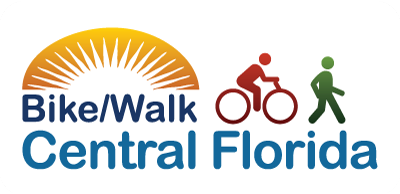 USA Cycling is taking the lead on safely easing cyclists back into riding with a group and participating in events. As the national governing body for the sport of cycling, the organization released “Return to Riding and Racing Events,” a set of guidelines and toolkit to help cyclists, clubs, teams and event organizers manage the risk to both participants and spectators at group gatherings and rides amid COVID-19. The organization released these guidelines during a webinar just prior to ending their total ban on event permits on May 31. The guide features suggestions and practices to help assess and mitigate risk at events and during rides.
USA Cycling is taking the lead on safely easing cyclists back into riding with a group and participating in events. As the national governing body for the sport of cycling, the organization released “Return to Riding and Racing Events,” a set of guidelines and toolkit to help cyclists, clubs, teams and event organizers manage the risk to both participants and spectators at group gatherings and rides amid COVID-19. The organization released these guidelines during a webinar just prior to ending their total ban on event permits on May 31. The guide features suggestions and practices to help assess and mitigate risk at events and during rides.
In a statement on its website, USA Cycling said that it “looks forward to working with the entire cycling community in returning to riding and racing in a manner which protects our participants, events and host communities.”
A recording of the webinar and the full list of their resources and recommendations can be found here and includes:
- Survey results from members about riding during COVID-19
- Risk Assessment Tool for Event Organizers
- Individual Rider Checklist
- Club & Team Advice
- Group Ride Recommendations
- Group Ride Scenarios
- Event Guidelines
Below, we’ve listed USA Cycling’s recommendations for group rides and a checklist for individual riders. All suggestions should be considered in conjunction with CDC and local officials’ recommendations.
USA CYCLING GROUP RIDE RECOMMENDATIONS
KEY PRINCIPLES TO UNDERSTAND
- The virus that causes COVID-19 is easily spread, but also controllable.
- Similar to influenza, not measles or chickenpox.
-
- The virus is primarily spread through direct contact and droplets.
-
- Aerosolized spread may be possible but is much more likely in enclosed spaces.
-
- On bike, outdoor activities are probably the lower risk of infection. So pay at least as much attention to the o bike activities.
- You have the responsibility to not spread the virus and to not contract the virus.
-
ARE GROUP RIDES SAFE?
- Solo rides are safer than group rides.
- Small group rides with close contacts are likely safe.
- Small group rides with individuals other than close contacts can be risky, but that risk can be mitigated with some simple behavioral changes (see below).
- Large group rides with people that you don’t know are not recommended currently.

HOW DO WE MAKE TRAINING / SMALL GROUP RIDES SAFER?
RIDERS
- All riders should be symptom free for 14 days
-
- Symptoms = fever, chill fatigue, cough, URI symptoms, body aches, loss of smell or taste.
- The days of being a “hard man” and going to work or the group ride when you are feeling sick are over. Stay home, train solo.
-
- All riders should be free of risk factors for contracting the virus.
-
- Travel to area of spread, contact with known or suspected COVID-19 patients.
-
BEHAVIOR CHANGES
Principle: Each rider has 2 responsibilities:
- Assume that you have the virus and don’t spread it to the other riders
- Mask: wear a cloth mask to prevent droplet spread
-
- Bring a spare mask
- This is not intended to filter the air, just contain droplets Reduce droplets: if you have to sneeze, cough, blow your nose, etc. drop back and ensure that no one is in your slip stream.
-
- Distance: ride side by side or more than 20 feet behind.
-
- The farther away the better, but with a mask and low risk riding partners, distances of 20 feet are likely safe.
-
-
- Assume that other riders have the virus and don’t catch it from them.
- Mask: to prevent you from touching your mouth, nose, face or eyes
-
- Not intended to filter the air.
-
- No contact: no passing of water bottles, food, etc.
- Clean your hands before eating, touching your face, etc.
-
- Hand sanitizer is very e ffective and easily transported.
-
- Clean equipment after the ride.
-
- Disinfectant wipes, soap and water, 70% isopropyl alcohol all work
-
USA CYCLING INDIVIDUAL RIDER CHECKLIST
BEFORE ATTENDING A CYCLING EVENT
✔️ Know how COVID-19 spreads
✔️ Know the symptoms of COVID-19
✔️ Don’t travel if you are sick or are with someone who is sick
✔️ Determine if you are at higher risk for severe illness and if you are, don’t travel
✔️ Consider the possible risks you might encounter during travel
✔️ Consider who you are traveling back to and what risk you might be exposing them to. Is anyone considered high risk that you will be returning to?
TRAVELING TO & ATTENDING EVENT
✔️ Wash your hands often with soap and water for at least 20 seconds (or alcohol based sanitizer with at least 60% alcohol)
✔️ Avoid close contact with others (maintain 6’ social distancing)
✔️ Cover your mouth and nose with a cloth face cover when around others
✔️ Cover coughs and sneezes
✔️ Clean and disinfect everything
✔️ Avoid touching your eyes, nose, or mouth with unwashed hands
✔️ Bring all necessary liquids and foods to be able to provide for yourself

